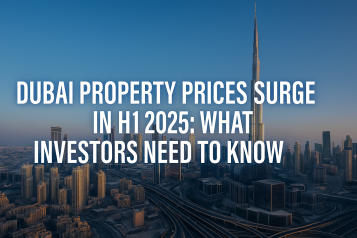

Table of Contents
- Introduction
- Understanding Property Plans in UAE Real Estate
- What Are 2D Property Plans?
- Features
- Use Cases in UAE
- Advantages
- Limitations
- What Are 3D Property Plans?
- Features
- Applications in Dubai’s Property Market
- Advantages
- Limitations
- 2D vs 3D Property Plans: A Complete Comparison
- The Role of Property Plans in Real Estate Development
- From Design to Construction
- How Buyers and Investors Use Property Plans
- Impact on Off-Plan Sales in Dubai
- Integration of VR, AR, and AI with 3D Property Plans
- Case Study: How Dubai Developers Are Leveraging 3D Visualizations
- Mistakes to Avoid When Choosing Between 2D and 3D Plans
- Costs and Fees for Property Plans in Dubai
- How Property Plans Influence Buyer Decisions
- Future Trends: The Rise of Digital Twins in UAE Real Estate
- FAQs
- Conclusion
- Homecubes CTA
Introduction
Dubai’s real estate market has always been at the forefront of innovation, blending cutting-edge technology with luxury property development. Among the many tools shaping the industry, property plans play a crucial role in design, marketing, and investment decisions.
Historically, 2D property plans dominated the market, offering technical layouts suitable for construction and regulatory approvals. But as Dubai positions itself as a global investment hub, 3D property plans have emerged as the new standard, transforming buyer engagement and redefining property marketing strategies.
In this article, we’ll dive deep into the differences, advantages, and applications of 2D and 3D property plans, focusing on their role in the UAE’s real estate ecosystem.
Understanding Property Plans in UAE Real Estate
Lifesize Plans uses cutting-edge projection technology to display architectural plans, comprising of upper and lower levels, outdoor landscaped spaces, communal areas, in an accurate 1:1 scale.
Walkthrough technology to visualise the completed look
pic.twitter.com/t6au6H6md0— Science girl (@gunsnrosesgirl3) January 28, 2024
Property plans are far more than blueprints; they are the visual foundation for how properties are designed, built, and sold. In the UAE, developers must comply with strict guidelines set by the Dubai Land Department (DLD) and the Real Estate Regulatory Agency (RERA).
- 2D property plans are mandatory for DLD project submissions and regulatory approvals.
- 3D property plans, however, are increasingly adopted for marketing and buyer engagement, especially in luxury and off-plan developments.
Dubai has also begun pushing toward Building Information Modelling (BIM) requirements for certain project types, highlighting the importance of accurate, tech-driven plans. You can read more about these mandates in the Lexology – BIM implementation in the UAE on the rise.
What Are 2D Property Plans?
2D property plans are technical drawings showing a flat, top-down layout of a property. They are essential for compliance and form the backbone of project approvals in Dubai.
Features
- Simple layouts displaying walls, partitions, and room placements
- Detailed measurements and scaling for accuracy
- Minimalistic representations for easy regulatory review
Use Cases in UAE
- Regulatory Submissions: DLD and RERA approvals require 2D plans.
- Construction Planning: Contractors and engineers rely on these for structural execution.
- Legal Documentation: Courts often refer to 2D plans in disputes.
Advantages
- Lower cost than 3D renders
- Precision-driven layouts
- Mandatory for compliance with UAE regulations
Limitations
- Not visually engaging for modern buyers
- Offers no immersive representation
- Less effective in off-plan marketing
What Are 3D Property Plans?
3D property plans bring layouts to life through photorealistic renderings and immersive experiences. Developers across Dubai increasingly use 3D plans to attract global investors.

Features
- High-resolution 3D renders of interiors and exteriors
- Integration with VR and AR for virtual tours
- Visualization of furniture, textures, lighting, and finishes
- 360-degree walkthroughs for remote buyers
Applications in Dubai’s Property Market
- Off-Plan Marketing: Essential for showcasing unbuilt properties.
- Luxury Developments: Widely used in premium areas like Downtown Dubai and Palm Jumeirah.
- International Investor Outreach: Simplifies decision-making for overseas buyers.
Advantages
- Immersive buyer experiences
- Higher engagement rates in marketing campaigns
- Ideal for virtual property sales and digital-first investors
Limitations
- Higher production costs
- Still not accepted for regulatory submissions
- Requires advanced platforms and tech integrations
2D vs 3D Property Plans: A Complete Comparison
| Aspect | 2D Property Plans | 3D Property Plans |
| Visualization | Flat, technical | Realistic, immersive |
| User Experience | Requires interpretation | Intuitive and buyer-friendly |
| Regulatory Use | Mandatory for DLD approvals | Not accepted yet |
| Marketing Impact | Limited | High engagement and better reach |
| Cost | AED 1,000 – AED 3,000 | AED 5,000 – AED 15,000+ |
| Best For | Compliance and construction | Marketing and investor attraction |
The Role of Property Plans in Real Estate Development
Property plans are involved at every stage of a project:
From Design to Construction
Architects start with 2D layouts to obtain approvals, then develop 3D visualizations for marketing and investor presentations.
How Buyers and Investors Use Property Plans
- 2D plans help compare unit dimensions and pricing structures.
- 3D walkthroughs create emotional connections, influencing purchase intent and can help if your property won’t sell in Dubai.
Impact on Off-Plan Sales in Dubai
Dubai is a leader in off-plan property transactions, with nearly 69% of residential sales in Q1 2025 coming from off-plan projects (Knight Frank — Dubai Residential Market Review Q1 2025).
In this competitive space:
- 3D property plans build buyer confidence.
- Virtual walkthroughs allow global investors to evaluate properties remotely.
- Developers using 3D content often report higher inquiry volumes and faster deal closures.
Integration of VR, AR, and AI with 3D Property Plans
Dubai’s proptech revolution has accelerated the adoption of advanced tools:
- VR Walkthroughs: Buyers “step inside” unbuilt units with VR headsets.
- AR Overlays: Mobile apps showcase future skyline views from balconies.
- AI Rendering: Personalizes interiors in real time, letting buyers visualize custom finishes.
Portals like Bayut 3D Live — interactive floor plans in the UAE demonstrate how immersive visualization has become mainstream in property marketing.
Case Study: How Dubai Developers Are Leveraging 3D Visualizations
Emaar Creek Waters
Emaar used VR-powered 3D tours during the launch, allowing buyers to explore layouts virtually, leading to fast-paced sales.
DAMAC Lagoons
DAMAC introduced AR-enhanced brochures targeting European investors, resulting in a surge of global inquiries.
Sobha Hartland
Sobha pioneered customizable VR experiences, enabling buyers to “redesign” interiors virtually — a feature especially attractive to high-net-worth clients.
Mistakes to Avoid When Choosing Between 2D and 3D Plans

- Using only 3D renders without preparing regulatory-compliant 2D plans
- Over-investing in expensive visualizations for small-scale projects
- Failing to align marketing visuals with approved layouts
- Ignoring global investors’ demand for immersive buying experiences
Costs and Fees for Property Plans in Dubai
| Service | Average Cost |
| 2D Property Plan Design | AED 1,000 – AED 3,000 |
| 3D Rendering (Basic) | AED 5,000 – AED 10,000 |
| 3D Rendering (Luxury Projects) | AED 12,000 – AED 20,000 |
| VR Walkthrough Integration | AED 15,000+ |
Costs vary depending on property size, design complexity, and marketing requirements.
How Property Plans Influence Buyer Decisions
Dubai’s real estate market is increasingly visual-first.
Developers integrating 3D experiences benefit from:
- Higher inquiry rates
- Greater investor trust
- Faster decision-making for off-plan purchases
Future Trends: The Rise of Digital Twins in UAE Real Estate
Dubai is moving toward digital twin technology — creating fully interactive replicas of entire buildings before they’re constructed. According to Dubai Municipality’s BIM roadmap, 3D-enabled submissions may become a regulatory requirement by 2030.
This will eventually blur the lines between technical planning and marketing visualizations, making 3D the new standard.
FAQs
1. Are 3D property plans mandatory in Dubai?
No. 2D plans remain the regulatory requirement, but 3D plans dominate marketing strategies.
2. Do DLD and RERA accept 3D plans for approvals?
Not yet. Developers must submit 2D layouts for permits and registrations.
3. Which is better for off-plan buyers?
3D property plans offer a more engaging preview, especially for international investors.
4. Are VR walkthroughs common in Dubai property marketing?
Yes. Platforms like Bayut 3D Live and developer portals have made them standard.
5. Will 3D plans eventually replace 2D plans entirely?
Possibly. With the rise of digital twin technologies, Dubai may eventually make 3D BIM submissions mandatory.
Conclusion
In Dubai’s dynamic property market, 2D and 3D property plans serve complementary purposes:
- Use 2D plans for compliance, accuracy, and construction workflows.
- Use 3D plans to engage buyers, attract international investors, and boost marketing performance.
Adopting both is the smartest strategy for developers competing in UAE’s high-demand real estate market.
Ready to Elevate Your Property Marketing?
At Homecubes, we’re preparing to revolutionize Dubai’s real estate sector by combining 3D property visualization with real estate tokenization.
While our VARA license is still under process, we’re building solutions to help investors explore, analyze, and invest in properties like never before.
Contact Us Today and be the first to experience the future of real estate investment.










